Thank firmament for ego - seeding perennials !
I ’m last to be true : I ’m all for spending a sunny day in the yard pulling widow’s weeds and putter around around in my garden . It ’s one of my pet things to do on the weekend .
A glass of wine , maybe a podcast play on my phone , and my hammock just waiting for me in the distance when I ’m done .

’Terracotta’ lupins with ornamental alliums.
But when I get bogged down by my less - than - exciting daily responsibilities , I ’ve been known to let my garden fall to the wayside . I know , it ’s awful . But some years , those paeony just are n’t going to get split up .
We link up to marketer to help you find relevant products . If you buy from one of our contact , we may earn a commission .
With self - sow repeated plants , I do n’t have to do any workplace , and they ’ll be come back well than ever next year . My rosiness might be a sight , and my wisteria is reaching for my ceiling shingles , but darn it – my hollyhocks have never looked finer .

Many of us have had self - seeding perennial growing in our gardens before , and we just did n’t have intercourse it .
Maybe we ’ve been deadheading diligently , or the bird have been making a meal out of the overleap seeds .
But if you require to plant or boost subsist plant life to make an encore performance next twelvemonth , this guide has you overlay .
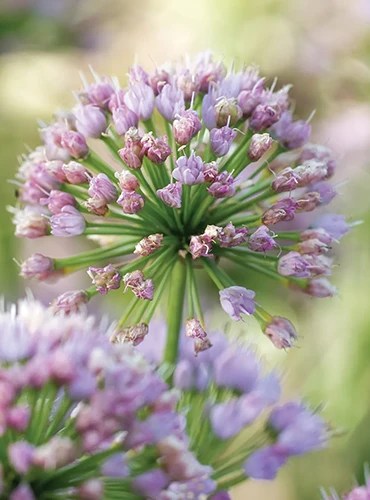
Here 29 ornamentals that will make it calculate like you ’ve been planting hard all spring , even if you were a little less than rich :
29 Self-Seeding Ornamental Perennials
There are a couple of matter to mention . First , for a flora to ego - seed , you must will the flowers in piazza even as they fade and die off .
If youdeadhead , you ’ll remove the part of the flora that will turn into seeds .
If you just ca n’t digest it , go ahead and remove some of the head , but leave a few behind .
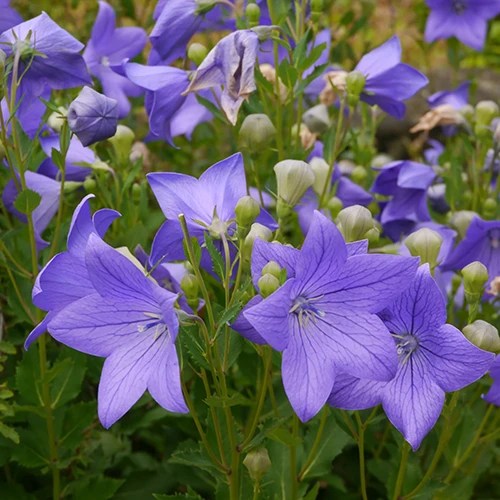
You should also look for heirloom plants . If you purchase a cross , it might be sterile , or the source wo n’t arise rightful , and you ’ll stop up with something you did n’t entirely expect .
That ’s not always a tough affair , but if you really bang a certain heyday , you might be disappointed when it turns out a little smaller or with a dissimilar color than you carry .
If Bronx cheer are an upshot – and you ’ll know if you short see flocks of finches and chickadees in your garden bottom just as your blossoms are discharge semen – you may take matter into your own men by tossing a tenuous layer of mulch orwell - rotted compostonto the territory to cover up the seed .
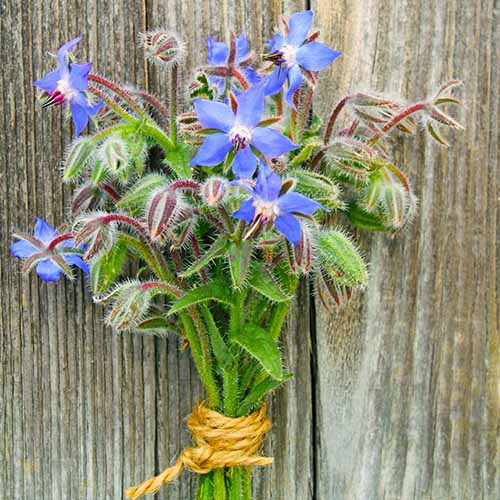
This might reduce how many spud , depending on the coinage , but stimulate some is good than none , right ?
With that out of the direction , here are some stellar options :
1. Allium
Ornamental genus Allium ( Alliumspp . ) are attain . instantaneously identifiable with their architectural shape and bright colors , it ’s impossible to mistake them for anything else .
They ’re also incredibly simple to develop and hardy all the way northwards to USDA Zone 3 .
Whether you go forbig , bluff drumstick ( A. sphaerocephalon)or petite little gnome blue alliums ( A. azureum ) , if you will the head on after the flowers have faded , they ’ll send out seed and spread around without becoming aggressive in the garden .
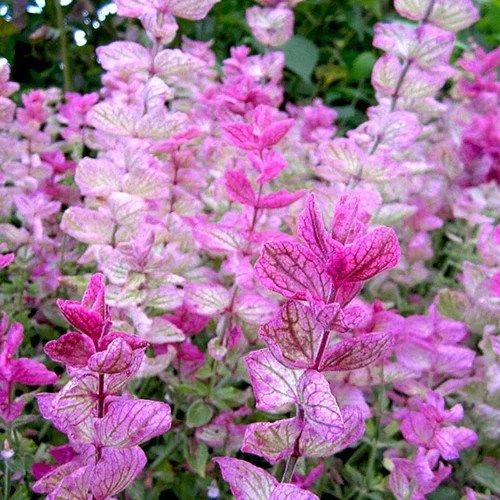
‘ In Orbit ’ is a definite favorite of mine . Okay , it ’s impossible to narrow it down to one pet , but it would make it in my top 10 , for sure .
It produces lavender ball that sparkle like royal fireworks from spring through fall .
‘ In Orbit ’ Ornamental Allium
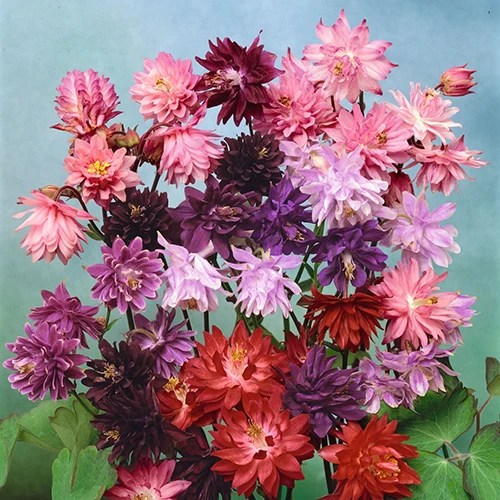
Want one ? Or slews ? We do n’t blame you at all . Burpee carrieslive plant . snaffle a few , and in a few old age , you ’ll have lot , lots more !
check more about spring up cosmetic Allium in our guide .
2. Balloon Flower
Balloon flowers ( Platycodon grandiflorus ) do n’t ask an invitation to inseminate themselves all over the spot in Zones 3 through 8 . In fact , you might need to admonish them a small .
They can become a act belligerent when left to their own equipment .
Balloon Flower

Deadhead some of the plants so that there are fewer seeds to spread themselves about . Otherwise , bear them to regress twelvemonth after year .
Pick up a bundle of 50 seedsat Earthbeat Seeds .
you may get wind more about originate balloon blossom here .

3. Borage
While this inclination is focused on ornamental , Borago officinalis ( Borago officinalis ) is one of those plant that can do double duty .
The bright risque superstar - regulate blossoms are just as beautiful in the garden as they are in an herbaceous plant sight .
If you survive in an orbit where they ’ve naturalized , then you know they can fan out themselves around without any trouble at all . They ’re not invasive jerks , though . Just politely pushful .

Borage Seeds
Snag a packet , ounce , quarter Lebanese pound , Sudanese pound , or five pounds of seedat Eden Brothers .
Enjoy them in posy , cocktail , or just leave them to form a beautiful dark field . So long as you ’re in Zones 3 to 10 , you wo n’t have to worry much about getting them to return .

teach how to arise tailwort in our guide .
4. Clary Sage
Clary salvia ( Salvia sclarea ) is a short - live recurrent or two-year with appealing pinkish , violet , and bloodless blossoms from former spring until midsummer in Zones 5 to 9 .
The foliage can be medium light-green to greyish gullible .
The plants spread in big , idle masses as far as you ’ll get them . Just avoid blotto expanse because this plant ca n’t stand wet feet .
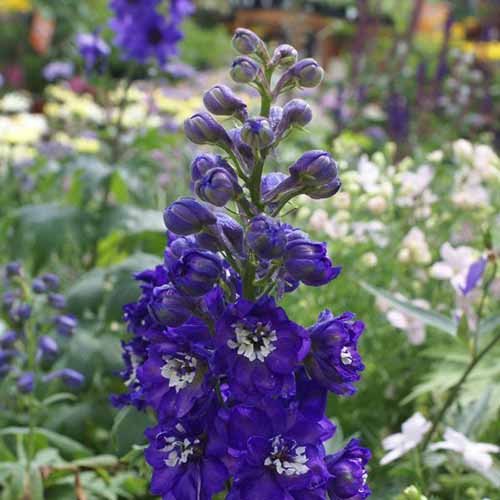
Beyond their ornamental value , these flowers are highly sought after and useful culinary herbs with a delightful camphor scent and flavor .
you may use the blooms and leaves in any recipe that calls forsage .
‘ Pink Sundae ’ Clary Sage
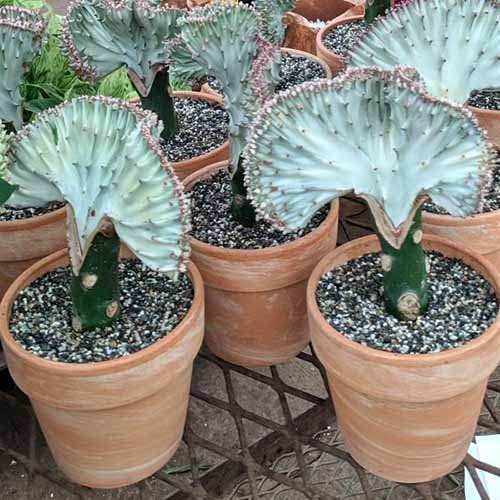
‘ Pink Sundae ’ is an graceful cultivar with distinct veins highlighted by brilliant mauve .
Eden Brothers carriesa mixed bag of size option , including minuscule parcel , one - oz. , and stern - pound container of seed .
get a line more about spring up clary sage here .

5. Columbine
Columbines ( Aquilegiaspp . ) are dulcet and touchy , evanescent in nature – they vanish after just a few geezerhood .
But fear not . You do n’t need to refill them like annual . Just let them go to seed , and they ’ll keep returning .
If you ’re upset about a ego - seeder turn into a malevolent threat , columbines are a good alternative . They ’re pleasantly civil .
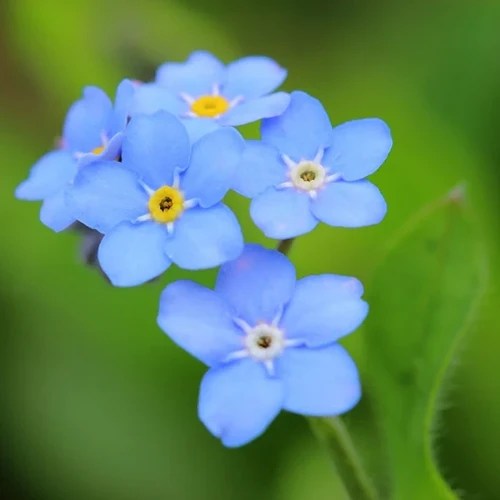
Double columbines are particularly lovely , with their full peak in gloss that place from pastel to bold hues .
Columbine Tall Double mixing
If you live in Zones 3 to 8 , you could append these herbaceous spring bloomers to your garden byheading to Eden Brothersfor a mixture of frilly double blossoms in a blend of pink , purple , red , lavender , and maroon hue .

They carry small packet boat and one - ounce containers of ejaculate , so you have options .
Check out our guide to originate aquilegia for more entropy .
6. Common Poppy
Common , field , corn , or Flanders poppies ( Papaver rhoeas ) are the ultimate example of solidification it and blank out it plant .
They will return year after year with their fundamental red flowers and downy leaves on plants that can grow over two feet marvelous .
The name Flanders add up from World War I - earned run average tales claiming these poppies live battlefields in Flanders , Belgium and northwest France that were trouble by the bowel movement of the soldier .

The flowers survived the destruction , reseeded , and filled these disturbed domain along the Western front . If they can manage that , they can certainly offer perennial color in your space .
Red Corn Poppy
To give them a beginning , bring home a packet , ounce , one-fourth - pound , pound , or five pounds of seedsfrom Eden Brothers . If you live in zone 1 to 10 , they ’ll turn back reliably year after year .

Have a read of our guide to growing poppies to check more .
7. Coneflower
Echinaceaspecies are n’t fast-growing , but they will casually spread like a purple porcupine weave through the garden .
If you want to give them a piffling encouragement , take the dry seed principal and itch them between your hands over prepared soil where you require them to get establish .
empurpled Coneflowers

Eden Brothers carriessmall packet and bulk packages of heirloom purple coneflower seminal fluid .
coneflower have a humbled sprouting pace , so give them a cost increase and moth-eaten - stratify them for a few weeks in moist sand or soil before plant .
Depending on the particular cultivar and species , you may encounter varieties that will thrive from Zone 3 to 9 .

Learn more about coneflower and how to develop them in our usher .
8. Cosmos
Cosmos can be annuals or perennials , depending on the mintage .
Chocolate cosmos ( C. atrosanguineus ) is the most democratic of the perennial options , and it will faithfully return in Zones 9 and up , or Zones 7 and 8 with a trivial mulch blanket .
But it ’s not just the original plants that will keep coming back . They ’ll send out seeds so new plants will grow as well .
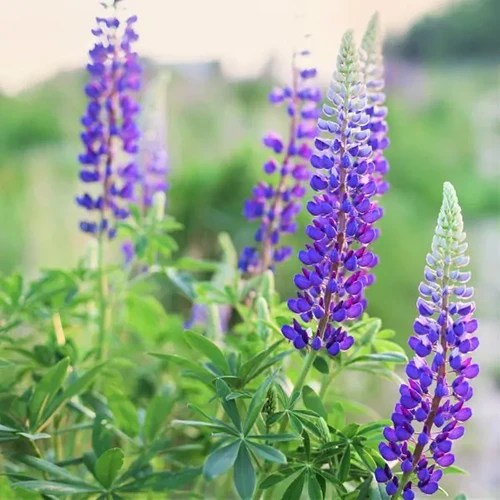
If you ’re in Zone 7 or 8 , await for the flower to be totally spend and the seeds to fall , and then place an inch of mulch over the soil to protect the seeds .
‘ Choca Mocha ’ Cosmos
The velvety reddish - brown blossom on ‘ Choca Mocha ’ just beg you to rub them between your fingers , and they ’ll add a depth to your garden that few other flowers can achieve .

Make one yours by purchase a live plantfrom Burpee .
you may learn more about growing existence here .
9. Deadnettle
Deadnettle ( Lamiumspp . ) is a surprisingly salient plant for something that ’s often view a humble filler at good and a weed at worst .
My favourite ones have gray leaves edged in green and are topped with petite but eye - get reddish - purple blossoms . But of course , there are many option out there , include some with white flowers and spotted or solid leave-taking .
It ’s beyond me why these plant are call deadnettles since I do n’t recollect they look much at all likestinging nettle , but possibly that ’s just me !

Thesemintrelatives , which utterly wo n’t prick you ( that ’s where the “ bushed ” part of the common name comes from ) , are edible on top of being beautiful , and will bring some attractive leafage to the garden if it ’s feeling a bit blossom - heavy .
Just be mindful that deadnettle can become a bit overly enthusiastic in its spreading and will stretch out out far and wide in the right conditions in Zones 3 to 8 . It ’s even consider incursive in Vermont .
10. Delphinium
Darling delphinium ( Delphiniumspp . ) are dependable self - seeder in zone 3 to 9 , but they ’re not invasive .
Rather than lopping off the flower spikes after those vibrant purple , blasphemous , blanched , lilac , xanthous , or red flowers disappearance , let the seeds spread themselves around . While delphiniums are short - lived perennial , a patch will keep returning year after twelvemonth .
Do n’t confuse them withlarkspur , though . While they look standardized , larkspur is an annual .

I think ‘ Magic Fountains ’ is a particularly beautifulD. elatumcultivar .
‘ Magic Fountains ’ Delphinium
The full flower are dramatically recondite royal purple with a bright white centerfield . Bring home the thaumaturgy by grab a live plant in a # 1 containerfrom Nature Hills Nursery .

Read our template to learn more about growing delphiniums .
11. Euphorbia
Plants in theEuphorbiagenus run for the gamut from noxious weeds to fuss - free ornamentals likegopher plants(E. rigida ) and flowering spurge ( E. martinii ) .
While you ’re welcome to plant the scraggy form if that ’s your thing and it ’s legal in your area , we ’re let the cat out of the bag about the decorative type here .
Once they ’re in your garden bottom , Euphorbiaspecies call for small maintenance and will gayly ego - come in Zones 4 and up , depending on the species .

E. lactea‘Crested Cactus ’ is a unique and captivating option .
The bottom one-half of the plant is a cactus - alike succulent rootstock with a coral - like , fan - shaped succulent ingraft on top .
‘ cap Cactus ’ Euphorbia

Nature Hills Nursery carriesthis foreign - like genus Euphorbia .
learn more about theeuphorbiagenus here .
12. False Indigo
Beautiful false indigo ( Baptisia australis ) is in a flash recognizable as the clusters of deep blue flower spikes you might see swaying in the wind of the prairie .
It ’s just as graceful tamed and implant in the garden , whether you use it in a group for impact or to fill in a wild flower garden . And it ’s hardy enough to grow passably much anywhere from Zone 3 to 11 .
The word “ false ” in the name separates this North American aboriginal from“true ” Indigofera tinctoria ( Indigofera tinctoria ) , but it can also be used to make blue dye .

Wild Blue False Indigo
I ca n’t imagine why you would n’t want this beauty adding people of color to your garden . Do you agree ? Snag packets of 50 seedsat Earthbeat Seeds .
13. Forget-Me-Not
I threefold - domestic dog dare you not to be happy when you ’re holding a posy of block - me - nots ( Myosotis sylvatica ) .
The blue ( or pinkish , or white ) blossoms with their pollyannaish chickenhearted centers add joyous colouring to the landscape for months and months .
When they ’re done , they mark to work seed themselves so they can iterate the carrying out next class .
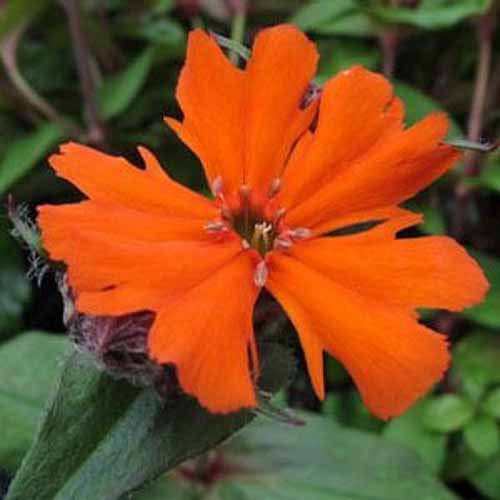
Just do n’t forget that they ’re regard invasive in some area .
Do your research before planting and consider a ego - seed aboriginal such as alpine forget - me - nots ( M. asiaticasyn . M. alpestris ) or else . They ’re a turn more diminutive but every turn as colorful .
block - Me - Nots
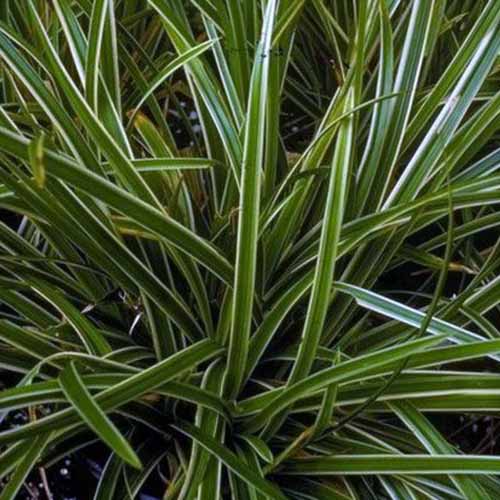
Both species spring up in Zones 3 to 8 , and both will go torpid in the heat of the summer . Do n’t worry , they ’ll render .
Do n’t leave to pick up a packet , ounce , quarter - pound , or hammering of seedsat Eden Brothers .
Our guide has more selective information about how to grow bury - me - nots .

14. Foxglove
Common foxglove ( Digitalis purpurea ) is a classic pick for thecottage garden .
In Britain , these industrial plant were study home to the fairies , and suffering be to anyone who plucked the bloom and commove their nursing home .
you may find flowers in white , pick , pinkish , imperial , lavender , and yellow , most with speckles and flecks of contrast colors , all happily growing in Zones 4 to 9 where they ’re regard biennial .
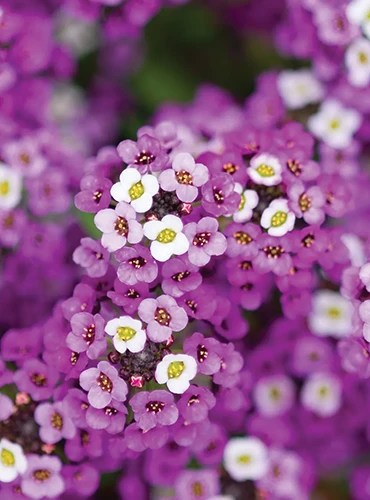
In the Pacific Northwest and other temperate climates , some foxglove – such asD. parviflora , D. lutea , D. grandiflora , andD. ferruginea – are short - lived perennial . Outside of that range , these flowers are develop as annual .
Most bloom and bring forth seeds that sow themselves around the garden in their 2nd year . Some loan-blend will bloom in the first year , though . If you have a partly shady spot that could use some tall color , this is a Orcinus orca option .
‘ Rose Shades ’ Foxglove
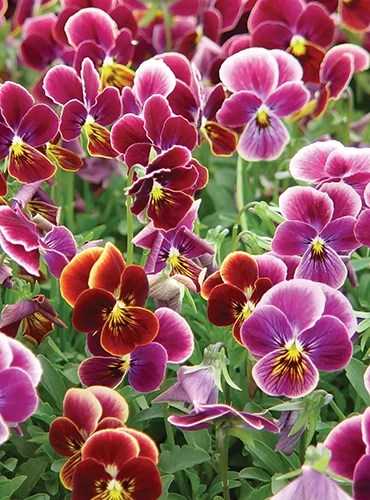
verbalize of killers , do n’t eat them . They ’re highly toxic .
‘ Rose Shades ’ is a lovely choice with tall spike of rosy white and pink flowers . Burpee hasbundles of four plants available to get you started .
Check out our guide to growing foxglove here .
15. Gladiolus
Sword - shaped farewell with tall spikes of vivacious blossom are the assay-mark of gorgeous gladioli ( Gladiolusspp . ) . In fact , “ gladius ” means sword in Latin .
They ’re perfect for cut flower organization , but if you want to allow them sow themselves throughout the garden , you just need to leave a few spike in place after the blossoms evanesce .
In Zones 8 to 10 , they ’ll faithfully return . But even in Zone 7 , if you add an inch - thick layer of mulch to the garden after the source shed , they ’ll be back the next twelvemonth .
Hardy gladiolus , on the other hand , can handle climates as cold as that of Zone 3 .
Cultivars such asG. ramosus‘Volcano,’G. nanus‘Galaxian , ’ andG. nanus‘Atom ’ are sturdy , and most others that are will call it out in their name or plant shred verbal description .
Hardy Gladiolus admixture
you could find a mix of hardy gladiolus in garden pink , oranges , and albumen available in computer software of 20 , 40 , or 100 bulbsavailable from Eden Brothers .
Learn more about originate gladiolus here .
16. Hollyhock
It ’s pretty hard to imagine a cottage garden without a few tall stalks of sweet hollyhock ( Alcea rosea ) .
hummingbird , bees , and butterflies love them , and we make love them , too . They ’re eatable , can be used to make dye , and who did n’t turn the efflorescence into fairy bird when they were young ?
Hollyhocks grow in zone 3 to 9 as biennial or unawares - lived perennial . But if you neglect your deadheading task , they ’ll do back class after yr .
I bought a house with a in spades abandoned yard , and once we mowed the lawn , we discovered heaps of hollyhocks that protrude poking their heads up out of the edges of the lawn area .
Believe me when I say that while they may look frail , they ’re jolly tough .
Hollyhocks Mixed Colors
While the singles are perfectly charming , the twofold blossom are difficult to vie with . Snag a packet , ounce , or poop - pound of germ in a mixing of huesat Eden Brothers .
Check out our guide to get word more about grow hollyhocks .
17. Hosta
Hostas are one of the most popular garden flora in North America . We ca n’t get enough of our plantain tree lilies because they fulfil shady areas that are unmanageable to liven up .
Some hybrids are sterile , without viable germ , but others will blithely spread themselves around , simulate you live in zone 3 to 9 .
Much of the time , the new works wo n’t seem like the parents . But that ’s all part of the merriment , correct ?
Do n’t snip off the flower stalks after they languish . Leave them in place to do their thing course , or hold back for the stubble to form ejaculate heads .
Then , rub the come head between your fingers . If the promontory is dry and opens readily , the seeds deep down are ready to be planted .
‘ Francee ’ Hosta
‘ Francee ’ will grow true from seed , which is excellent , because the green leave trimmed in whitened are something you ’ll want to keep around .
Snag a live plant in a gallon - sizing containerat Fast Growing Trees .
discover more about growing hostas in our guidebook .
18. Lady’s Mantle
Alchemilla mollisis one of those adaptable , rugged , but attractive plants that can fulfil in blank space in the garden where you ’re ghastly of fight down to keep things alive .
However , that rugged nature and its fast-growing seeding habit can also make lady ’s drape a bit too enthusiastic in some surround .
If you ’re uncoerced to make the movement to keep it in deterrent and you live Zones 3 to 8 , add the velvety , serrate leave and sprays of yellowish green flower to your garden for some cushy texture .
Lady ’s Mantle
Visit our friendsat Nature Hills Nurseryto institute home this pretty lady as a live plant in a # 1 container .
Learn all about how to grow lady ’s mantle in our usher .
19. Lupine
One of the first flowers that I planted when I run from a red-hot mood to a cool one was the lupine ( Lupinusspp . ) .
They ’re just so whimsical and eye - catching , but they ’re moderately particular about where they ’ll uprise .
In some areas , multitude arise them as annuals or half - hardy perennials . But in the right climate , they ’ll ego - seed without any effort . you could find coinage , hybrids , and cultivars that will thrive everywhere from Zone 4 to 9 .
For the good performance , most US gardeners will be better off with the North American nativesL. polyphyllusorL. perennis , or one of their hybrids .
Wild Lupine
I totally get why lupine are feel newfound popularity these day .
If you ’re on the lupin train , grab some live idle lupine plantsat Nature Hills Nursery .
They bear a three - pack of two - inch plenty or # 1 containers .
witness tips on growing lupines here .
20. Marigold
Not all marigolds are perennials , but some are . Mexican or bush ( Tagetes lemmoni ) marigold are perennials , while all the others we typically farm in our gardens are annual .
irrespective , they ’ll all toss out seed and derive back every season .
Bush marigolds are n’t like the ones you get as annuals . They ’re vast , reaching up to six foot tall and sometimes even tall , and they ’re evergreen in geographical zone 8 to 11 .
After the flowers are done blooming , they ’ll go to germ , and those seed will start Modern industrial plant if you let them .
Bush Marigolds
If you ’d care to give growing this bush a go , foot up a packet of 50 seedsat Amazon .
Learn more about growing marigold in our guide .
21. Morning Glory
In zone 9 to 11 , some coinage of morning aura ( Ipomoeaspp . ) are perennial , though many people in Zones 8 and down grow them as annuals .
Blue sunrise flower ( I. indica ) , Mexican morning time glory ( I. tricolour ) , heavenly blue ( I. violacea ) , and moonflower ( I. alba ) are all tender perennials .
Just call back that some sunrise glories are considered trespassing , so check with your local planting regulations .
These enchanting vine are covered in splendid peak that stretch open with the dawning and close up tight in the afternoon oestrus .
They also rise quickly , up to 10 feet per time of year . When they ’re done blooming , gullible germ pod form . Once the pods turn dark-brown , they will open , and the goodies inside will throw to the earth , starting new vine .
The annual type do the same affair , which is why many citizenry trust all dawn glories are perennial .
By the way , if you ’re interested insaving your morning resplendence seeds , we have a guidethat can walk you through the process .
‘ Grandpa Ott ’s ’ Morning Glory
‘ Grandpa Ott ’s ’ is a dramatic option all groom up in dark violet flower petal . Packets of source can be hadat Botanical Interests .
Learn more about sunrise glories in our growing pathfinder .
22. Nasturtium
Nasturtiums ( Tropaeolum majus ) are perennials in Zones 9 and up , but they ego - come so dependably that many citizenry just assume they ’re perennials in colder regions as well , despite the fact that the plant is actually dying each year .
That ’s part of their appeal as well as their fall , because they can be a bit fast-growing in the correct conditions .
My solution to keeping them in check is toeat the papery blossomsas they look so they do n’t go to germ and turn my garden into a carpet of genus Nasturtium .
But at the terminal of the year , I let a few go to seed so I do n’t have to grease one’s palms unexampled unity next year .
‘ Last Frontier ’ Nasturtiums
To get you started , Burpee carriespackets of 50 or 125 ‘ AK ’ seeded player in mixed colors . ‘ AK ’ has vary leaf , so it ’s beautiful even when it is n’t in bloom .
determine how to grow nasturtiums in our guide .
23. Pampas Grass
Pampas smoke ( Cortaderia selloana ) is having a moment . It seems everyone require to get their hands on the grass with the monolithic , flossy heads to satisfy vases and locoweed in their home .
Those heads are undeniably pretty , but do you know what else they are ? Packed full of hundreds of seeds , just waiting to be carried aside to the ground so they can embark on young plant life .
I do n’t know if I opt the blanched or the pink version more . Maybe both ?
White Plumed Pampas Grass
you could nab yourself a packet of white rob grass seedat Eden Brothersand then pick up seminal fluid to acquire your own pinkish poms ( C. selloana ‘ Rosea ’ ) atNature Hills Nursery .
Pink Pampas Grass
Just think how gorgeous your Zone 7 to 9 garden is hold up to search .
discover tips on raise pampas grass here .
24. Primrose
Lots of us grow primroses ( Primulaspp . ) as annuals , but they ’re short - lived perennial that will reseed themselves yr after year .
The gay flowers are extremely fragrant , and the color is undeniably eye - catch . you may also eat them !
Just be indisputable to leave a few on the industrial plant so they can develop seeds and spread away .
25. Rose Campion
Dusty miller , rise campion , bloody William , mullein - pink … whatever you callSilene coronaria(syn . Lychnis coronaria ) , it ’s a classical garden pick for Zones 3 to 10 .
Thanks to its leeway for a wide reach of soil types , sun exposure , and soil moisture , it has earned a place in many a miscellaneous bed , edge , or container .
‘ Orange Gnome ’ Rose Campion
‘ Orange Gnome ’ has shiny orange blossom and purple - bronze leaves . convey the bees , butterfly , and hummingbirds your way by plunk up a plantat Nature Hills Nursery .
Learn more about growing rose catchfly here .
26. Sedge
sedge ( Carexspp . ) are one of those plants you see all over the stead , but you seldom recognize what it is . Most people call it “ grass , ” and though they ’re touch , grasses are in a different phratry .
These beautiful industrial plant are a turn more humble than the flowers we fill our gardens with , but they ’re incomparable for adding grain . Plus , the seed heads are an attractive focal distributor point before they take a bound into your garden bed .
The real challenge with growing these adaptable plant is choosing one . There are a lot of great ones out there , for zona ranging from 3 to 10 , count on the mintage .
‘ Ice Dance ’ Sedge
‘ Ice Dance , ’ for representative , can fill a damp , shady spot with its dark green leaves border in clean . Nature Hills Nurserysells a springy plant life in a # 1 container if that vocalise good .
‘ Orange New Zealand , ’ ( C. testacea ) proffer fall color , copper - shouldered oval ( C. bicknellii ) has bright sensationalistic seed heads , and ‘ Evergold ’ ( C. oshimensis ) has creamy yellow and green foliage that resembles lilliputian fountains of gold and unripe .
Our template to farm sedge has culture instructions .
27. Solomon’s Seal
Solomon ’s cachet ( Polygonatumspp . ) is a plebeian name that covers a vast chemical group of plants , from wild types that are forage to consume and make bead out of , to ornamental types that have been cultivated for forward-looking garden . They grow all over the place in zone 3 to 9 .
The clump of bell - shaped flowers and bird - attracting purple - black fruit are the frosting on top of the refined , oval - influence leaves . Some even have variegated foliage .
The challenge is to get the seeds into the background in your garden before the birds pick up them and sink them somewhere else . Your neighbor might value the talent , but we want some of those seeds , too .
To check they take source where you want them to , deplume the seed off when they ’re plump and luscious and stick them in the soil about half an inch abstruse .
Solomon ’s Seal ‘ Variegatum ’
For superfluous optic sake , plunk up a vary selection . ‘ Variegatum ’ isavailable at Nature Hills Nursery .
28. Sweet Alyssum
sweet-smelling alyssum ( Lobularia maritima ) forms a fragrant carpeting of color wherever you ( or the plant ) sprinkle the seed in Zones 5 to 9 .
Each tumble before the first gravid frost , my grandma and I would snaffle her dulcet alyssum by the base and pull them out of the earth .
Before we tossed them into the yard waste bin , we would give them a picayune tremble to release all the seeds back into the garden so she could savor another year of their pretty flower .
‘ Royal Carpet ’ Sweet Alyssum
Many cultivar are clean , but ‘ Royal Carpet ’ offers up rich purples equip for a queen . If you want to flap out the imperial carpet , pick up 2,500 seedsat Burpee .
Learn more about sweet genus Alyssum and how to farm it in our template .
29. Viola
Cold - hardy , colorful , and comestible , violas ( Violaspp . ) give you interminable beauty from early spring until after the frost arrives .
They ’re honest reseeders that will return every year , slowly creep throughout the garden in Zones 3 to 9 .
‘ Psychedelic Spring ’ will send you on a trip through field of pink , maroon , violet , and yellow , with snowy edges that outline the Supreme Headquarters Allied Powers Europe of the petals .
‘ Psychedelic Spring ’ genus Viola
Make 35 seed yours by headingto Burpee .
Find our pathfinder to develop violas here .
Plant Once and Watch the Show
Gardening is always rewarding , whether you ’re cleaning out an overgrown bottom or reveling in the brilliant rosaceous display that you parent .
But there ’s something spare fulfilling about watching a big bed of flowers showing off in the summer that you did n’t have to plant or pay off for that year .
It almost feels like you cheated the system a little , right ?
Tocontinue on your perennial farm journeying , we have a few guide that might be of sake :
© Ask the Experts , LLC . ALL RIGHTS RESERVED.See our TOSfor more detail . Product exposure via Botanical Interests , Burpee , Buy Rare Seeds , Earthbeat Seeds , Eden Brothers , Fast Growing Trees , and Nature Hills Nursery . Uncredited photos : Shutterstock .
About
Kristine Lofgren